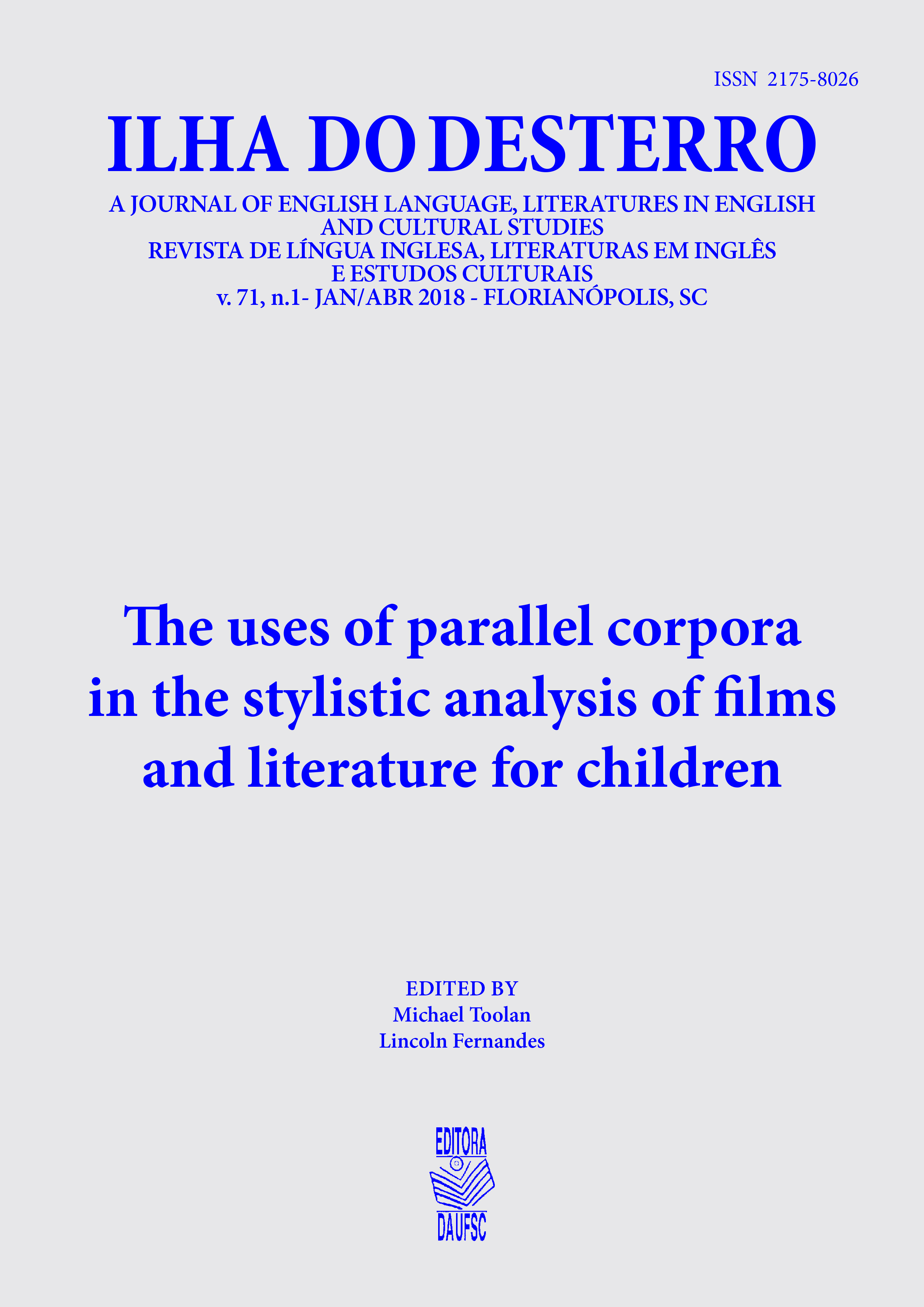Verbal and verbal-visual logico-semantic relations in picturebooks: an English-Portuguese parallel corpus study
DOI:
https://doi.org/10.5007/2175-8026.2018v71n1p53Abstract
This article presents and explores a methodology to analyze verbal and verbal-visual logico-semantic relations (LSRs) in picturebooks originally written in English and their translations into Brazilian Portuguese. Drawing on systemic-functional theory (Halliday & Matthiessen, 2014) and on Visual Grammar (Kress & van Leeuwen, 2006), verbal and visual text in picturebooks was annotated and analyzed according to the LSRs identified in them. Results showed differences between the type of LSRs that tend to occur most frequently in verbal-visual texts and in clause complexes: while Expansion_Extension is the most frequent verbal-visual LSR in both the source text and the translated text, Projection_Locution is the most frequent LSR in clause complexes, in the source and translated texts as well. The study contributes a proposal to categorize LSRs in verbal text and LSRs in visual and verbal text that proves to be fully operational for annotation purposes and text analysis.References
Halliday, M. A., & Matthiessen, C. (2004). An introduction to functional grammar (3 ed.). London: Edward Arnold.
Halliday, M., & Matthiessen, C. (2014). Halliday's Introduction to Functional Grammar (4th. ed.). Oxford: Routledge.
Knowles, M., & Malmkjaer, K. (1998). Language and control in children's literature. London and New York: Routledge.
Kress, G., & Van Leeuwen, T. (2006). Reading images: the grammar of visual design (2ª ed.). London & New York, Great Britain: Routlegde.
Puurtinen, T. (1998). Syntax, Readability and ideology in children's literature. Meta: journal des traducteurs / Meta: Translators' Journal, 4 (XLIII), 1-10.
Shavit, Z. (1981). Translation of children's literature as a function of its position in the literary polysystem. Poetics Today, 2(4), 171-179.
Toury, G. (1995). Descriptive Translation Studies and beyond. Amsterdam and Philadelphia: John Benjamins.
Unsworth, L. (2006). Towards a metalanguage for multiliteracies education: Describing the meaning-making resources of language-image interaction. English Teaching: Practice and Critique, 5, pp. 55-76.
Van Meerbergen, S. (2009). Dutch picture books in Swedish Translation: Towards a model for multimodal analysis. Translation and (Trans)formation of Identities. Selected papers of the CETRA Research Seminar in Translation Studies , pp. 1-20.




